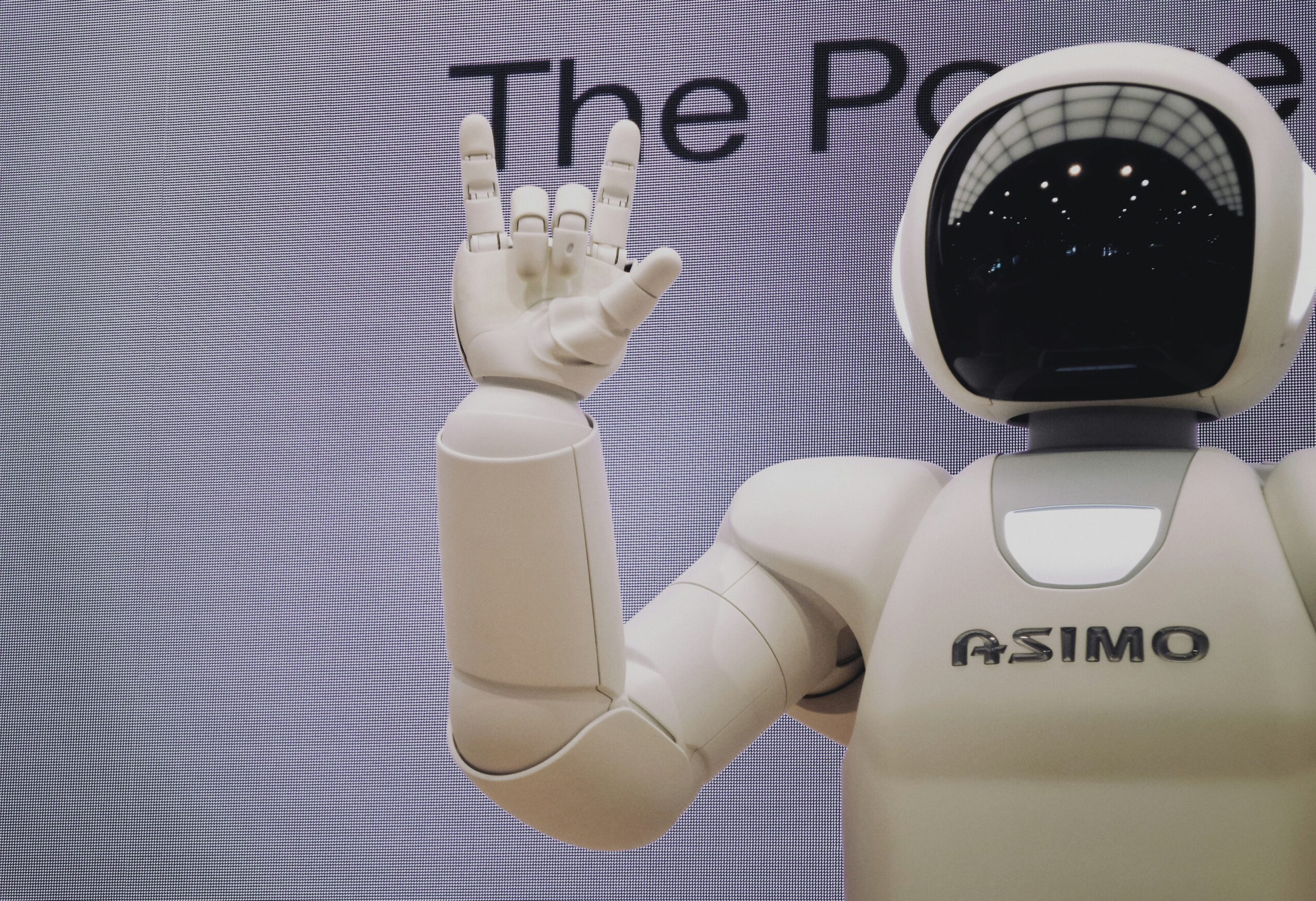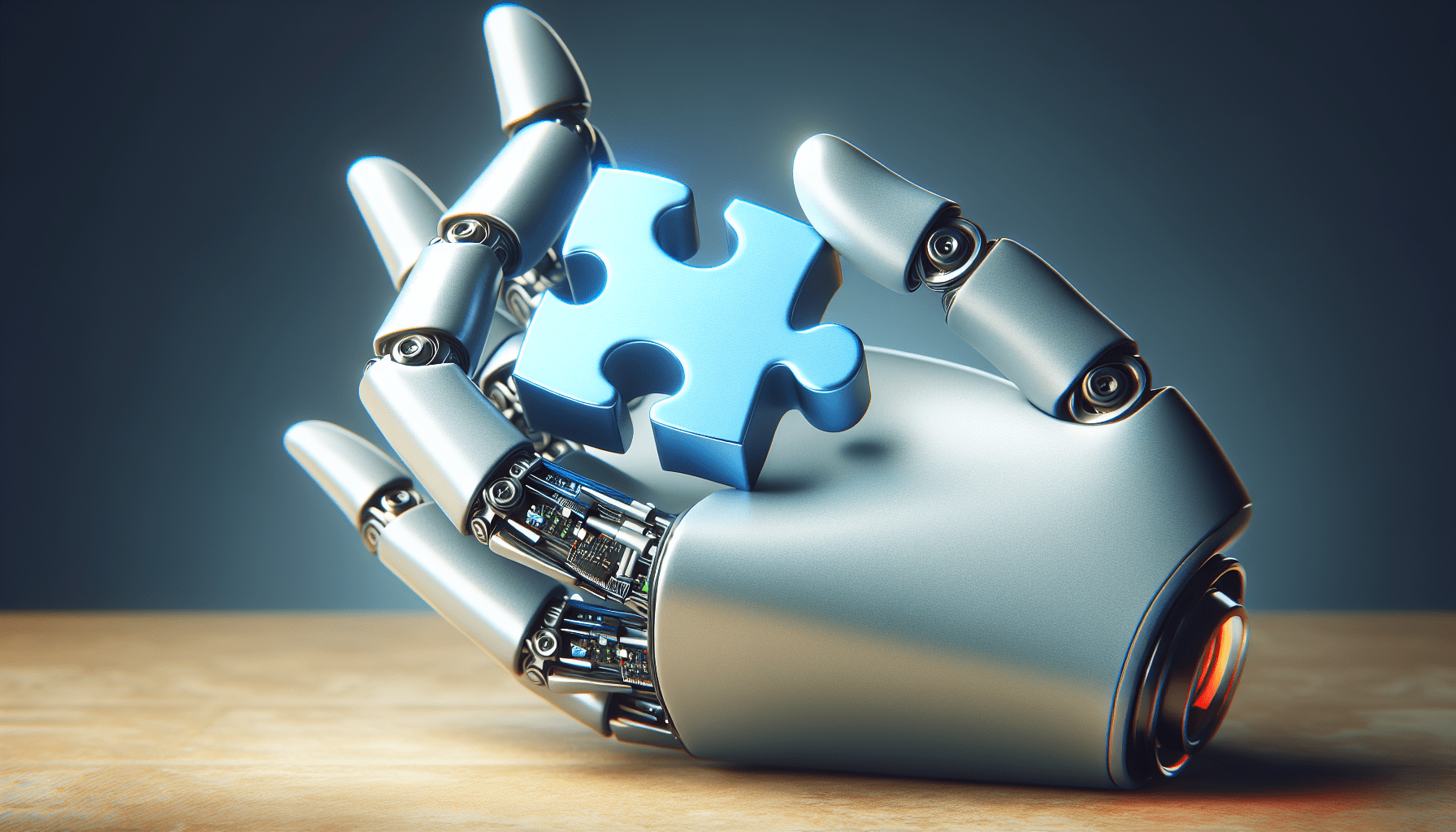So you’re curious about the world of Artificial Intelligence but have no idea where to start? Well, fear not, because this article is here to guide you through the AI basics in the most friendly and approachable way possible. From understanding what AI actually means to exploring its various applications and potential impact on our lives, this comprehensive overview will provide you with a solid foundation to navigate the exciting world of AI. So, let’s embark on this enlightening journey together and unravel the wonders of AI step by step!

What is AI?
Artificial Intelligence, also known as AI, refers to the simulation of human intelligence in machines that are programmed to think and learn like humans. It involves the creation of intelligent systems that can perform tasks without explicit human instructions. AI aims to enable machines to reason, understand, learn, and make decisions based on data, just like humans do.
Definition of AI
AI can be defined as the branch of computer science that deals with the creation of intelligent machines capable of performing tasks that would typically require human intelligence. These tasks include visual perception, speech recognition, decision-making, and problem-solving.
Difference between AI and Machine Learning
While AI and machine learning are often used interchangeably, they are not the same. AI is a broader concept that encompasses any technique that allows machines to mimic human intelligence. On the other hand, machine learning is a subset of AI that focuses on the ability of machines to learn from data and improve their performance without explicit programming.
Types of AI
There are three main types of AI: narrow AI, general AI, and superintelligent AI. Narrow AI refers to AI systems that are designed for a specific task, such as face recognition or language translation. General AI, also known as strong AI, refers to AI systems that possess the ability to understand, learn, and apply knowledge across various tasks, similar to human intelligence. Superintelligent AI, on the other hand, refers to AI systems that surpass human intelligence in virtually every aspect.
History of AI
Early beginnings
The history of AI dates back to ancient times, with the concept of artificial beings found in mythology and folklore. However, the formal study of AI began in the mid-20th century. In 1956, the Dartmouth Conference marked the birth of AI as a field of study, gathering researchers who aimed to develop machines with human-like intelligence.
Development milestones
Over the years, several significant milestones have shaped the development of AI. In 1950, Alan Turing proposed the “Turing Test” as a measure of machine intelligence. In 1956, the first AI program, the Logic Theorist, was developed. In 1958, the first AI language, LISP, was created. These milestones laid the foundation for further advancements in the field.
Recent advancements
In recent years, AI has seen remarkable advancements. Breakthroughs in machine learning techniques, such as deep learning, have enabled AI systems to achieve unprecedented levels of accuracy and performance. This has led to significant progress in areas such as natural language processing, computer vision, and autonomous vehicles.
Applications of AI
Virtual personal assistants
Virtual personal assistants, such as Apple’s Siri and Amazon’s Alexa, are AI-powered applications that can perform tasks or provide information based on voice commands. They can schedule appointments, set reminders, answer questions, and even control smart home devices.
Smart home devices
AI has revolutionized the concept of smart homes by enabling devices to understand and respond to human commands. AI-powered smart home devices, such as thermostats, lighting systems, and security cameras, can learn from user preferences and adjust settings accordingly.
Recommendation systems
AI-powered recommendation systems analyze user behavior and preferences to provide personalized recommendations. These systems are commonly used in e-commerce platforms, streaming services, and social media platforms to suggest products, movies, shows, or friends that are likely to be of interest to the user.
Image and speech recognition
AI has greatly improved image and speech recognition capabilities. Image recognition systems can accurately identify objects, faces, and scenes in images or videos, while speech recognition systems can transcribe spoken words into text. These advancements have applications ranging from security surveillance to accessibility for individuals with disabilities.
Autonomous vehicles
AI is playing a crucial role in the development of autonomous vehicles. AI algorithms analyze sensor data and make real-time decisions to navigate and operate vehicles without human intervention. This technology has the potential to enhance road safety and revolutionize transportation systems.
Healthcare
AI has the potential to transform healthcare by improving diagnostics, treatment methods, and patient care. AI algorithms can analyze vast amounts of medical data to help identify patterns and make predictions, enabling early detection of diseases and personalized treatment plans.
Finance
AI is being increasingly utilized in the finance industry for tasks such as fraud detection, algorithmic trading, and risk assessment. AI-powered systems can analyze large volumes of financial data to identify anomalies, make investment decisions, and optimize business processes.
Robotics
AI is a key component in the field of robotics. AI-powered robots can perform tasks that are dangerous, repetitive, or require high levels of precision. These robots can be employed in fields such as manufacturing, healthcare, and space exploration, among others.
How AI works
Data collection
AI systems rely on vast amounts of data to learn and make intelligent decisions. This data can be collected from various sources, such as sensors, databases, or the internet. The quality and quantity of data are crucial for the performance of AI algorithms.
Data preprocessing
Once the data is collected, it needs to be preprocessed to eliminate any inconsistencies, errors, or irrelevant information. Data preprocessing involves tasks such as cleaning, normalization, and feature extraction to ensure that the data is suitable for training the AI algorithms.
Algorithm training
AI algorithms are trained using the preprocessed data. Training involves feeding the algorithms with input data and desired output information, allowing the algorithms to learn patterns, relationships, and rules. This process often involves techniques such as supervised or unsupervised learning.
Algorithm testing and evaluation
After training, the AI algorithms are tested and evaluated to assess their performance. Testing involves feeding the algorithms with new data to measure their accuracy, reliability, and efficiency. Evaluation metrics are used to measure the algorithms’ performance against predefined criteria.

AI vs Human Intelligence
Strengths of AI
AI has several strengths compared to human intelligence. AI systems can process and analyze vast amounts of data much faster than humans. They can also perform complex calculations and simulations with high accuracy. AI is not affected by emotions, biases, or fatigue, making it consistent and reliable in its decision-making.
Limitations of AI
Despite its strengths, AI has certain limitations. AI systems lack common sense reasoning and intuition, which humans possess. AI can only operate within the boundaries of its programming and is limited to the data it has been trained on. AI also cannot understand context or interpret complex human emotions, leading to potential challenges in certain applications.
AI-human collaboration
AI-human collaboration is a growing area of research and development. By combining the strengths of AI systems with human creativity, intuition, and empathy, it is possible to create synergies that can solve complex problems. AI can assist humans in decision-making, provide insights, and automate repetitive tasks, freeing up human resources for more strategic and creative endeavors.
Ethical considerations in AI
Bias and fairness
One ethical consideration in AI is the potential for bias and unfairness. AI systems learn from data, and if the data is biased or reflects societal inequalities, the AI systems can perpetuate and amplify those biases. It is crucial to ensure that AI algorithms are trained on diverse and unbiased datasets to promote fairness and avoid discriminatory outcomes.
Privacy concerns
AI technologies often require access to sensitive personal data, raising concerns about privacy and data protection. It is important to implement robust privacy policies and security measures to safeguard individuals’ personal information and prevent unauthorized access or misuse.
Unemployment and job displacement
The rise of AI has sparked concerns about potential job displacement and unemployment. AI technologies have the potential to automate certain tasks and jobs, leading to changes in the labor market. It is important to anticipate these changes and invest in retraining and education programs to ensure a smooth transition and minimize negative consequences.
Autonomous decision-making
AI systems that make autonomous decisions raise questions of accountability and responsibility. When AI systems make decisions that impact human lives, it becomes essential to establish clear guidelines and regulations to ensure transparency, accountability, and the ability to override or challenge AI decisions if necessary.
AI responsibility and accountability
AI systems should be developed and deployed with accountability in mind. It is crucial to have frameworks in place to understand the decision-making process of AI systems and ensure that they align with ethical, legal, and societal norms. Allocating responsibility for AI outcomes and establishing mechanisms for redress and recourse are important considerations.

Famous AI examples
AlphaGo
AlphaGo, developed by DeepMind (a subsidiary of Alphabet Inc.), is an AI program that made headlines in 2016 when it defeated the world champion Go player, Lee Sedol. This achievement showcased the potential of AI in complex strategic games and demonstrated that AI systems could surpass human capabilities in specific domains.
IBM Watson
IBM Watson is an AI system that gained widespread recognition when it competed and won against human Jeopardy! champions in 2011. Watson’s ability to understand natural language questions and provide accurate answers demonstrated significant advancements in natural language processing and information retrieval.
Siri
Siri, developed by Apple, is a virtual personal assistant that uses natural language processing and AI techniques to perform tasks based on voice commands. Siri can answer questions, send messages, make calls, and perform various other functions, making it a widely used AI application.
Tesla Autopilot
Tesla Autopilot is an AI-powered driver-assistance system that enables partial automation of driving tasks. It can control acceleration, braking, and steering within certain constraints. While it is not fully autonomous, Autopilot showcases the potential of AI in revolutionizing transportation and improving road safety.
Future prospects of AI
AI in everyday life
In the future, AI is expected to become an integral part of everyday life. From personalized virtual assistants to autonomous vehicles, AI technologies will continue to shape and enhance various aspects of our daily routines.
AI in industries
AI is set to revolutionize industries such as manufacturing, finance, healthcare, and agriculture. AI-powered systems can optimize processes, improve efficiency, and make predictive recommendations, leading to increased productivity and innovation.
AI in healthcare
AI has immense potential in healthcare, from diagnostics and treatment planning to drug discovery and patient monitoring. AI algorithms can analyze medical data, identify patterns, and make predictions, enabling early detection, personalized treatments, and improved patient outcomes.
AI in transportation
The development of autonomous vehicles powered by AI is expected to transform transportation systems. AI can make transportation safer, optimize traffic flow, and reduce fuel consumption. Self-driving cars and smart transportation infrastructure will likely become more prevalent in the future.
AI in education
AI technologies have the potential to revolutionize education by providing personalized learning experiences, intelligent tutoring, and adaptive assessments. AI-powered systems can analyze student data, identify individual learning needs, and provide tailored recommendations and interventions.

Learning AI
Online resources and courses
Various online platforms offer AI courses and educational resources for beginners and professionals alike. Websites such as Coursera, edX, and Udacity provide comprehensive courses on AI fundamentals, machine learning, and deep learning.
Books and publications
There are numerous books and publications available that cover various aspects of AI. These resources range from introductory books for beginners to advanced technical books for experts. Some notable titles include “Artificial Intelligence: A Modern Approach” by Stuart Russell and Peter Norvig, and “Deep Learning” by Ian Goodfellow, Yoshua Bengio, and Aaron Courville.
AI communities and forums
Engaging with AI communities and forums can be a valuable way to learn and stay updated on the latest developments in AI. Platforms such as Kaggle, Reddit’s Machine Learning community, and AI-related conferences and meetups provide opportunities to connect with experts, ask questions, and collaborate on AI projects.
Conclusion
AI is a rapidly evolving field that has the potential to revolutionize various aspects of our lives. From virtual personal assistants to autonomous vehicles, the applications of AI are vast and diverse. However, as AI continues to advance, it is crucial to address ethical considerations, promote fairness, and ensure accountability. With responsible development and collaboration between AI and human intelligence, we can harness the full potential of AI to create a brighter and more efficient future.







Leave a Reply